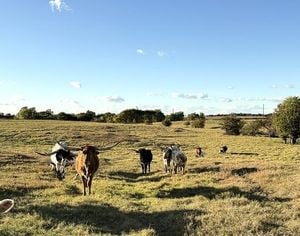In the heart of Nepal’s Himalayas, a series of deadly avalanches has left the mountaineering world reeling, as officials confirm at least nine climbers have lost their lives and several others remain missing after two separate incidents in early November 2025. The tragedies unfolded against a backdrop of worsening weather, with Cyclone Montha recently battering the region, and have reignited questions about the risks of climbing in one of the world’s most challenging environments.
The first and most devastating avalanche struck on the morning of Monday, November 3, 2025, at the base camp of Yalung Ri, a 5,630-meter (18,370-foot) peak in eastern Nepal’s Dolakha district. According to police and rescue officials cited by AFP and The Independent, the avalanche buried a 15-member expedition comprised of five foreign climbers and ten Nepali mountain guides. The group had set out that morning after spending the previous night in Na village, hoping for a window of clear weather to begin their acclimatization climb before attempting the higher Dolma Kang peak nearby.
Deputy Superintendent of Police Gyan Kumar Mahato described the chaos that followed: “The avalanche buried everyone on the slope. We got the information late and the difficult weather delayed immediate response.” The rescue operation, hampered by heavy wind, snow, and poor visibility, was forced to pause as helicopters could not initially reach the site. “A helicopter finally reached Na village on Monday evening, and we have also deployed rescue teams on foot,” Mahato told The Independent. But for many, help came too late.
By Tuesday, November 4, the grim toll had come into focus. Seven climbers were confirmed dead: all five foreign climbers—three from France, one from Italy, and one from Canada—as well as two Nepali guides. Four of the Nepali guides were injured and airlifted to Kathmandu for treatment, while search efforts continued for four missing high-altitude guides. Media reports and statements from expedition organizer Phurba Tenjing Sherpa of Dreamers Destination identified some of the deceased as three Italians, two Nepalis, a German, and a French climber, though there were discrepancies in early reports regarding the nationalities of the victims. The confusion was compounded by the chaos of the rescue and the remoteness of the site.
One survivor, speaking anonymously to the Kathmandu Post, recounted the desperate aftermath of the avalanche: “We shouted and cried for help, but no one could reach us. We were told that a helicopter would come after four hours but by then several of our friends were gone. Had the rescue arrived on time, more lives could have been saved. Four of our friends are out of contact.”
Officials said the Rolwaling Valley, where Yalung Ri is located, had seen days of snow before the accident, leaving the snowpack dangerously unstable even after the skies cleared. “The team set out only after the weather cleared on Sunday but the snowpack remained unstable,” Mahato explained. The region’s weather had been deteriorating since the previous week, with snowstorms reported on the mountains and Cyclone Montha triggering heavy rain and snowfall across Nepal and neighboring India. The cyclone’s aftermath left trekkers stranded on popular routes and contributed to treacherous climbing conditions.
Yalung Ri, despite its formidable setting, is considered a peak suitable for beginners and is often used for training before attempting higher Himalayan summits. The autumn season, though less popular than spring, still attracts hundreds of climbers eager to take advantage of the narrow summit window between the monsoon and the onset of winter. Yet, as these tragedies underscore, the risks remain ever-present. According to the Himalayan Database, an expedition archive cited by RTÉ, at least 1,093 people have died on Nepalese peaks since 1950, with avalanches accounting for nearly a third of those fatalities.
In a separate but related incident, two Italian climbers—Alessandro Caputo and Stefano Farronato—were found dead at Camp I of Mount Panbari, a 6,887-meter (22,595-foot) peak in western Nepal. The men had been out of contact since Friday, November 1, after being caught in heavy snowfall at 5,000 meters above sea level. Their deaths were confirmed on Tuesday morning by local authorities and Italy’s foreign ministry. This accident, too, was attributed to the severe weather that has plagued the region in recent days.
The Nepal Tourism Board issued a statement expressing condolences for the tragic losses, noting the profound impact on the mountaineering community. “The tragic loss of life in the Himalayas is deeply felt by all,” the board said, as reported by Devdiscourse. The outpouring of grief has been echoed by expedition organizers, local officials, and climbers worldwide.
Rescue operations have been relentless but fraught with difficulty. Teams from Nepal’s army and police, along with local guides, have braved hazardous conditions to search for the missing and evacuate survivors. The helicopter that finally reached Na village on Monday evening provided a lifeline for the injured, but the ongoing risk of further avalanches and deteriorating weather has complicated efforts to retrieve the bodies of those still buried on the mountain.
Nepal’s unique geography—home to eight of the world’s 14 tallest mountains, including Mount Everest—makes it a magnet for adventurers and mountaineers. Yet it is also a land where nature’s power is often unforgiving. The country’s climbing industry, which draws hundreds of foreign climbers each year and supports a network of local guides and support staff, is no stranger to tragedy. The autumn climbing season, while offering fewer crowds and a different kind of beauty, also comes with shorter days, colder temperatures, and a higher likelihood of storms and unstable snow.
As the search for the missing continues and families mourn their loved ones, the recent avalanches are a stark reminder of the dangers that come with pursuing adventure in the Himalayas. For those who survived, the experience is sure to leave lasting scars. For those who lost their lives, their passion for the mountains will be remembered by a community that knows all too well the fine line between triumph and tragedy in the world’s highest places.
In the end, the mountains remain as alluring as ever, but these recent events have cast a long shadow over Nepal’s climbing season, underscoring the need for caution, preparation, and respect for the unpredictable forces of nature.





